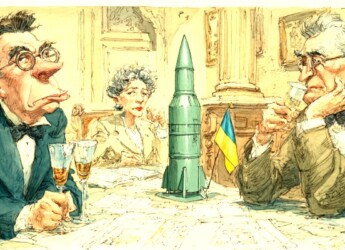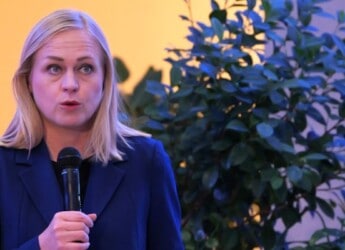Editor’s Note: Nick Mapletoft’s article, Right Decisions from Wrong Decisions: One Manager’s Perspective, provides an in-depth exploration of decision-making through the lenses of structured models, ethical principles, and reflective practices. While transparency is not explicitly a central theme, the article implicitly highlights its importance through discussions of fairness, integrity, and open communication. These elements are essential for leaders navigating complex challenges in fields like cybersecurity, information governance, and eDiscovery. By focusing on ethical clarity, reflective learning, and inclusive decision-making, Mapletoft offers a compelling framework for aligning leadership practices with organizational values and goals. This article is a must-read for professionals committed to ethical and effective decision-making in today’s dynamic landscape.
Content Assessment: Right Decisions from Wrong Decisions: Transparency, Ethics, and Reflection in Leadership
Information - 94%
Insight - 95%
Relevance - 90%
Objectivity - 93%
Authority - 94%
93%
Excellent
A short percentage-based assessment of the qualitative benefit expressed as a percentage of positive reception of the recent article from ComplexDiscovery OÜ titled, "Right Decisions from Wrong Decisions: Ethics, Reflection, and Transparency in Leadership"
Industry News – Digital Residency Beat
Right Decisions from Wrong Decisions: Ethics, Reflection, and Transparency in Leadership
ComplexDiscovery Staff
Making the right decision in a complex world often feels like navigating a maze without a map. In Nick Mapletoft’s insightful article, Right Decisions from Wrong Decisions: One Manager’s Perspective, he explores how structured decision-making models, ethical considerations, and reflective practices can guide leaders through the labyrinth. While transparency may not be the primary focus, the article implicitly underscores its importance in fostering trust and resilience. By embracing ethical clarity and open communication, leaders can enhance the quality of their decisions and strengthen alignment within their organizations.
Mapletoft draws on Herbert Simon’s foundational model of decision-making, which outlines three essential stages: intelligence, design, and choice. These stages offer a structured approach to identifying problems, generating alternatives, and selecting the best solution. Rational frameworks, such as decision trees or SWOT analysis, provide clarity in this process. Yet, as Mapletoft notes, real-world decisions are rarely straightforward. Limited information, subjective biases, and external pressures often cloud judgment. In such circumstances, transparency can act as a guiding light. By openly sharing the rationale behind decisions and involving stakeholders in the process, leaders foster trust and inclusivity, even when decisions are challenging or unpopular.
At the heart of Mapletoft’s discussion is the importance of ethical decision-making. He contrasts two primary approaches: deontological ethics, which prioritize duty and adherence to moral rules, and teleological ethics, which focus on outcomes and the idea that the ends justify the means. Leaders, he argues, must navigate these perspectives carefully, seeking a balance between rigid adherence to principles and pragmatic consideration of results. The concept of the Aristotelian “Golden Mean,” a virtuous middle ground between extremes, serves as a useful framework for making such ethical judgments. Transparency plays a key role in this balance, ensuring that stakeholders understand not only what decisions are made but also why they are made.
Reflective practices also emerge as a critical component of effective decision-making. Drawing on Schön’s concept of “reflection-in-action,” Mapletoft emphasizes the value of assessing decisions dynamically as they unfold. This adaptive approach is particularly relevant in fast-paced industries such as cybersecurity, where new information and changing circumstances demand flexible and responsive leadership. By incorporating reflection into their processes, leaders can learn from past experiences and refine their decision-making strategies. Furthermore, Mapletoft highlights the power of involving teams in reflective practices, as diverse perspectives often uncover hidden insights and foster a sense of ownership and collaboration.
Backgrounder: This podcast, powered by Google Illuminate, invites listeners to explore the key themes of Nick Mapletoft’s impactful paper, Right Decisions from Wrong Decisions: One Manager’s Perspective. The conversation centers on how managers navigate the complexities of decision-making, emphasizing the critical role of mistakes as learning opportunities. By examining how experience, gained through missteps, shapes future success, this discussion provides a nuanced look at decision-making as a process of continuous improvement. [Cite Mapletoft, N. (2021). Right decisions from wrong decisions: One manager’s perspective. Academia Letters, Article 3361. https://doi.org/10.20935/AL3361]*
Mapletoft’s reflections on decision-making are particularly relevant when addressing the challenges of making difficult decisions. For example, in recruitment, he emphasizes the importance of involving staff in the hiring process and using objective metrics to ensure fairness and minimize bias. By clearly communicating the criteria and rationale for selecting candidates, leaders can foster a sense of trust and reduce the risks of favoritism. Similarly, in the context of promotion, Mapletoft highlights the value of using clear appraisal metrics and evidence-based evaluations to demonstrate fairness. These practices ensure that the most qualified individuals are recognized while helping to maintain team cohesion and alignment with organizational goals.
When discussing the painful task of releasing staff, Mapletoft acknowledges the emotional and organizational impact of such decisions. He stresses the need for a formal and transparent process that clearly communicates the rationale behind the decision. Acknowledging the contributions of departing employees and treating them with respect and fairness not only upholds ethical standards but also reassures remaining staff that decisions are made with integrity. Mapletoft extends this principle to organizational restructuring, noting that clear communication about changes in purpose, vision, and job specifications can help employees understand the necessity of these decisions and reduce uncertainty.
Difficult decisions, as Mapletoft explains, often test the boundaries between personal and professional values. Leaders are called upon to act with integrity and consistency, ensuring that their choices align with organizational objectives while remaining fair and impartial. Although not a central theme, the article suggests that clear communication and evidence-based reasoning help demonstrate that decisions are thoughtful and objective rather than arbitrary. By involving others in the decision-making process and providing clear rationale, leaders can reduce conflict and foster a culture of trust and accountability.
Ultimately, Mapletoft’s work serves as a powerful reminder that effective decision-making requires more than technical expertise or procedural rigor. It demands a commitment to ethical principles, reflective practices, and clear communication. In fields like cybersecurity, information governance, and eDiscovery, where decisions can have profound and far-reaching consequences, these qualities are essential. Leaders who prioritize fairness and integrity enhance their decision-making capabilities while fostering trust and resilience within their organizations, even in an increasingly uncertain world.
As we consider Mapletoft’s insights, the question remains: how can we refine our leadership practices to ensure decisions are not only effective but also aligned with ethical principles, fairness, and organizational values?
News Source
- Mapletoft, N. (2021). Right decisions from wrong decisions: One manager’s perspective. Academia Letters, Article 3361. https://doi.org/10.20935/AL3361
Assisted by GAI and LLM Technologies
*Adapted with permission per Creative Commons (CC BY- 4.0).
Additional Reading
- Innovating Securely: Considering Confidentiality in AI Applications
- The Dual Impact of Large Language Models on Human Creativity: Implications for Legal Tech Professionals
Source: ComplexDiscovery OÜ


























